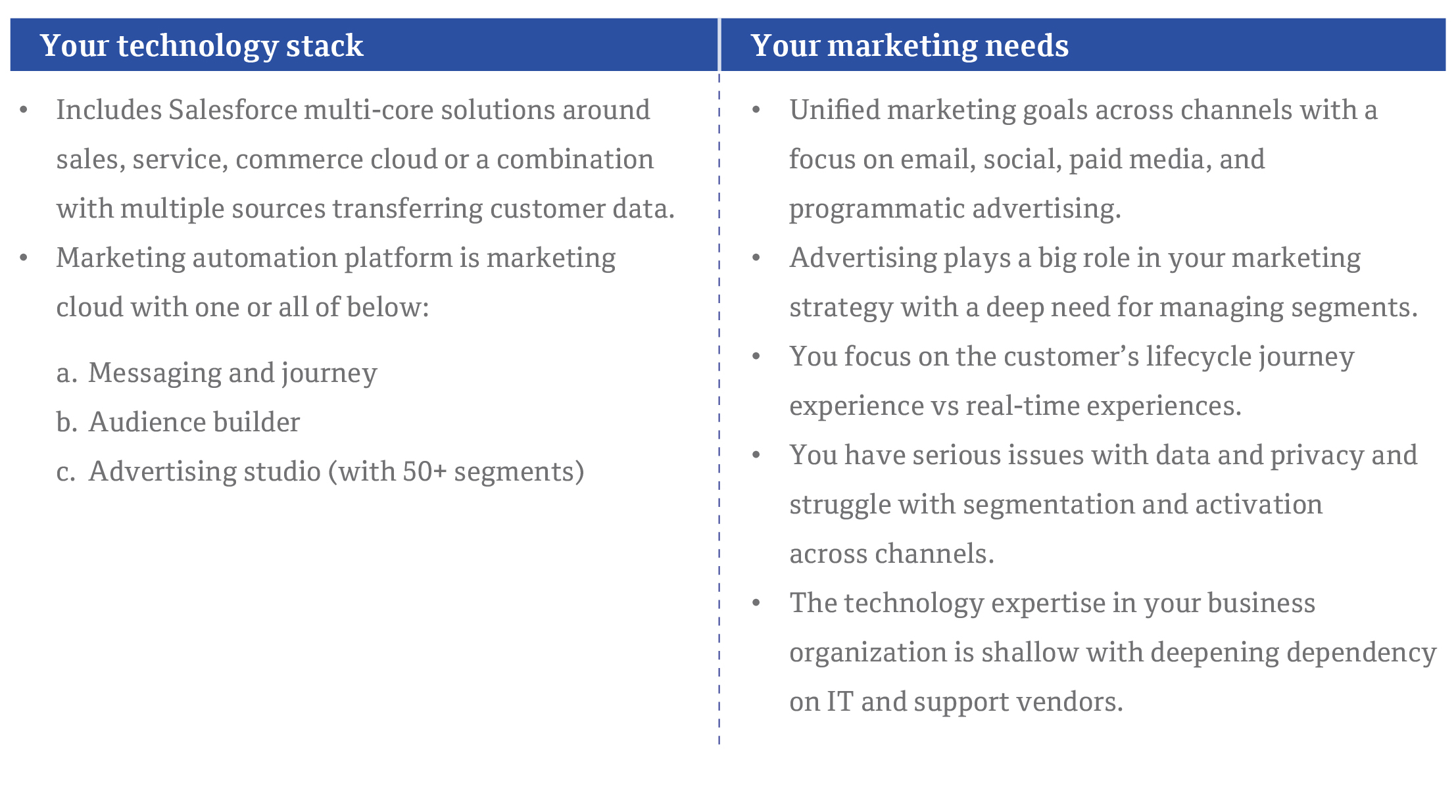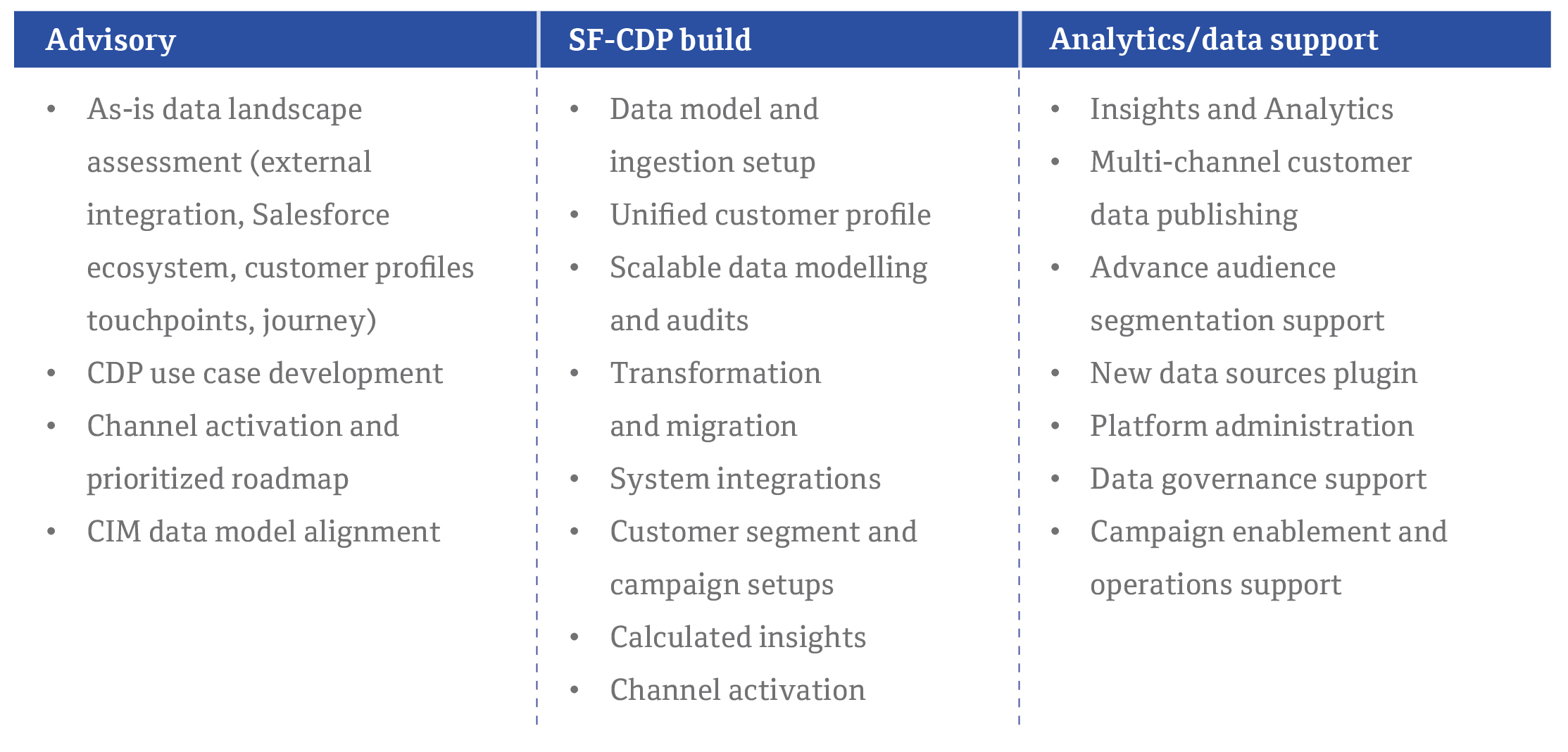Unlock The Power Of Customer Data With Salesforce CDP
The cookie-less future is no longer a dream, it is a reality. As we approach the second half of 2022, the importance of building first-party databases is becoming CRITICAL for global organizations. Apple and Google have already committed to honoring privacy in ways that are having a disruptive impact on the advertising world. Meta (earlier Facebook) had to revise and lower revenue guidance multiple times due to the impact of Apple’s privacy policy changes.
By mid-2023, the support for third-party cookies will be removed from Google Chrome (which controls 65% + of browser market). As per updated timelines mentioned in Google Product Blogs, “Chrome will phase out support for third-party cookies over a three month period finishing in late 2023.” Along with Safari, 85% of all web browsers will be relieved of third-party cookies. This will create a significant challenge for the advertising, publisher, and supplier ecosystem. The key point is that organizations need to focus on building first-party databases and understand their impact on branding and demand-gen initiatives in the cookie-less world. The good part is that it’s not too late yet.
How to plan for the first-party data future?
There is no denying the fact that if you have not invested in good customer data practices (acquisition, consent collection, data hygiene) it is going to take more than a handful of initiatives to get things back into order in such a short time (yes, 1 year is a short window). One tip is to plan and engage in customer acquisition and remarketing initiatives with a focus on creating an opted-in clean customer database. This blog is less about how to plan marketing initiatives and more about how to establish a future-ready ecosystem to alleviate such pains.
How does a CDP help?
This is where a solution like CDP (Customer Data Platform) comes into play. CDPs are not new and are often confused with Data Management Platforms DMP and Master Data Management MDM solutions. In fact, for a long time, the market for CDP remained dormant. However, with the recent focus on privacy, consent, and enterprise data ownership, CDPs are becoming an essential entity in the enterprise tech stack. For business functions driven by excellence in customer experience, CDP solutions will play an important role.
What do you risk by not investing in CDP?
I have been a big advocate for first-party data and its importance in marketing for any organization. With a focus on first-party data, the outlook of an organization shifts from looking at customer data as a commodity (available for purchase) to an asset. This asset differentiates and often delivers an edge over the competition. CDPs bring organization-owned customer data to the center of the marketing strategy. Of all the benefits a CDP solution brings to the table, here are the top 3:
- Consistent data ingestion: Lack of data definition and siloed meta-data structures are huge pains encountered across growing enterprises as they progress in their digital maturity journey. A CDP platform helps provide well-governed methods to ingest data collected across multiple channels and platforms.
- Customer data unification and identity resolution: Customer data unification and helping in de-anonymization are CDP power features. With IDs and tracking options, an individual can be identified based on his/her website engagement, form abandonment, social interactions, etc.
- Smart segmentation, insights, and audience activation: A CDP solution helps provide key audience insights around interest, purchase intent, channel preference, etc. helping marketing teams plan campaigns with hyper-personalized messaging. With powerful insights, CDPs help orchestrate marketing campaigns across various systems of engagement.
Why Salesforce CDP?
In recent years, the market for CDP has exploded. As I write this, there are 20+ established CDP players (and 100+ overall). In such a crowded space, it is very easy to get lost, and, worse even delay or ignore the CDP need for your enterprise. Many CDPs are positioned around first-party data and personalized marketing; they are mostly targeted toward marketing functions. The big differentiator with Salesforce is how the CDP is being envisioned as an evolution of CRM, providing the Customer 360° view, which will activate functions beyond Marketing. While current capabilities are focused on marketing functions, the roadmap is impressive and inclusive. Take a sneak peek into this 2 min video on Salesforce CDP.
So, the million-dollar question…when to select Salesforce CDP?
Once you have determined that your organization meets the broader CDP goals around data collection/unification, audience activation, and campaign insights, you are possibly looking at an ideal scenario to implement a CDP solution. At this point, it will be a no-brainer—you will need Salesforce CDP if you meet any of the criteria below.

LTIMindtree’s Salesforce CDP offerings
The data-driven enterprise is getting a boost, and we are very excited at LTIMindtree. We have been developing scalable offerings to help our customers win with CDP. Our current offerings include:

If you want to know more, please reach out to us. We are here to help.
https://www.ltimindtree.com/contact-us/
Latest Blogs
Introduction What if training powerful AI models didn’t have to be slow, expensive, or data-hungry?…
Pharmaceutical marketing has evolved significantly with digital platforms, but strict regulations…
Leveraging the right cloud technology with appropriate strategies can lead to significant cost…
Introduction The financial industry drives the global economy, but its exposure to risks has…




